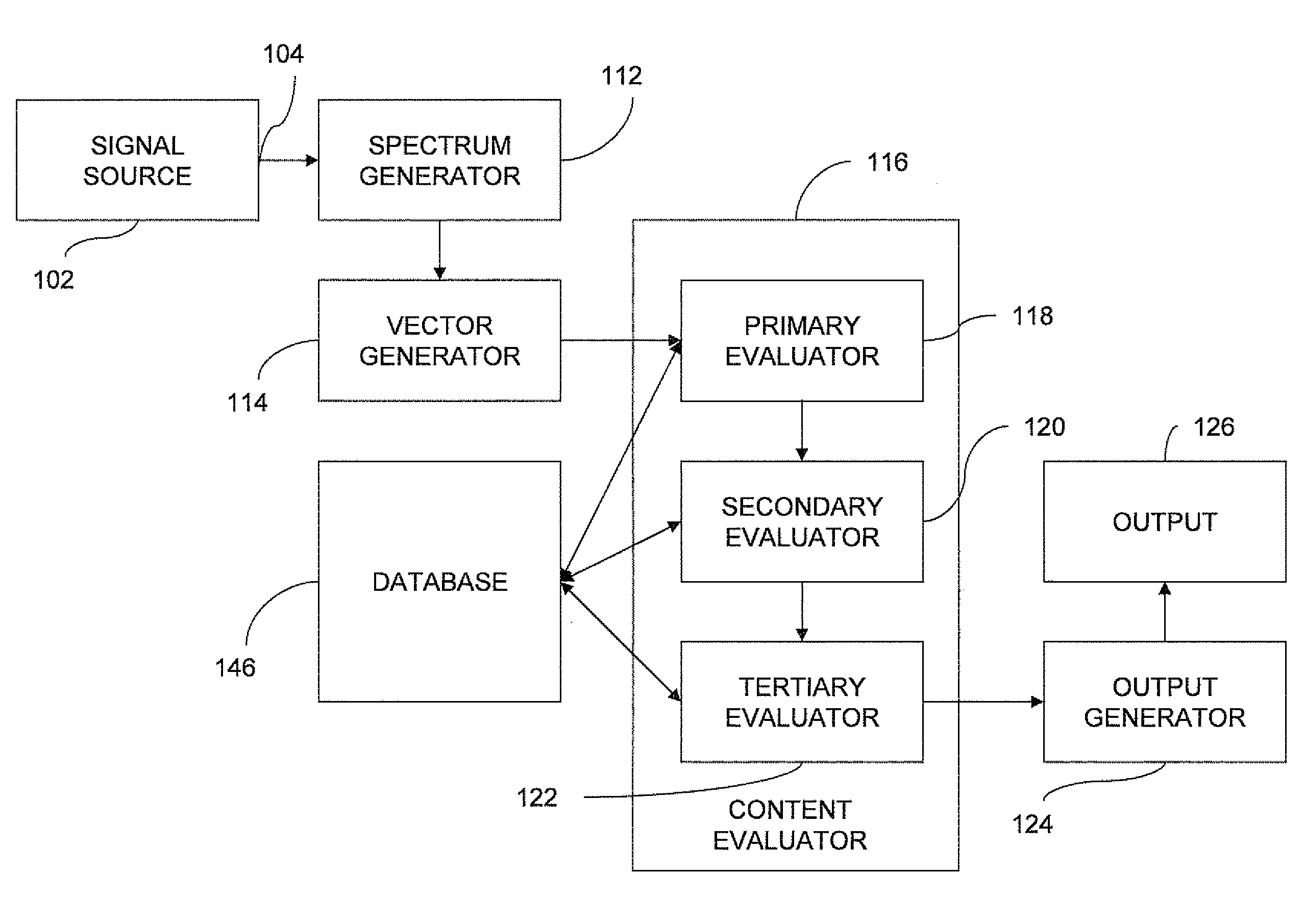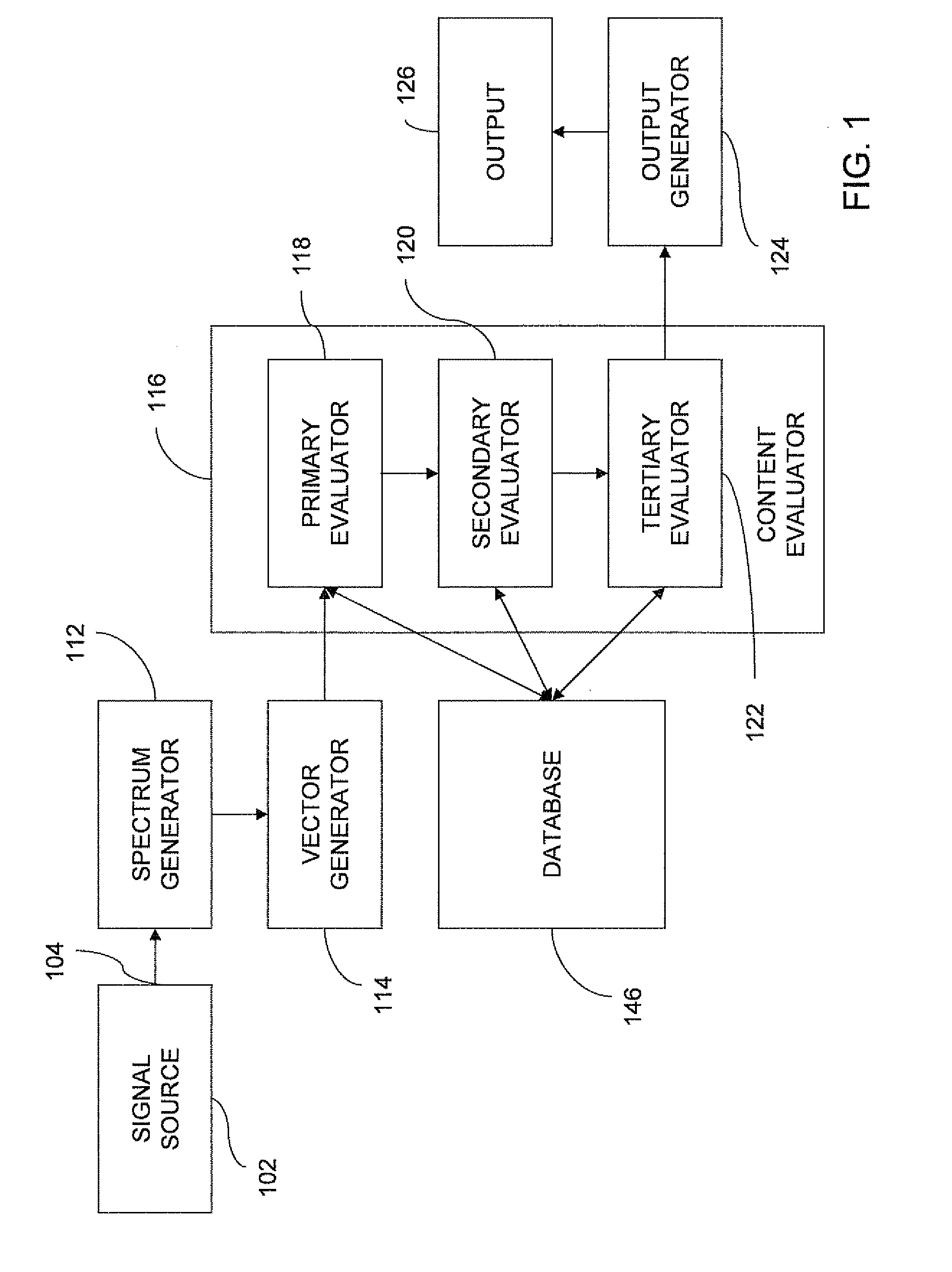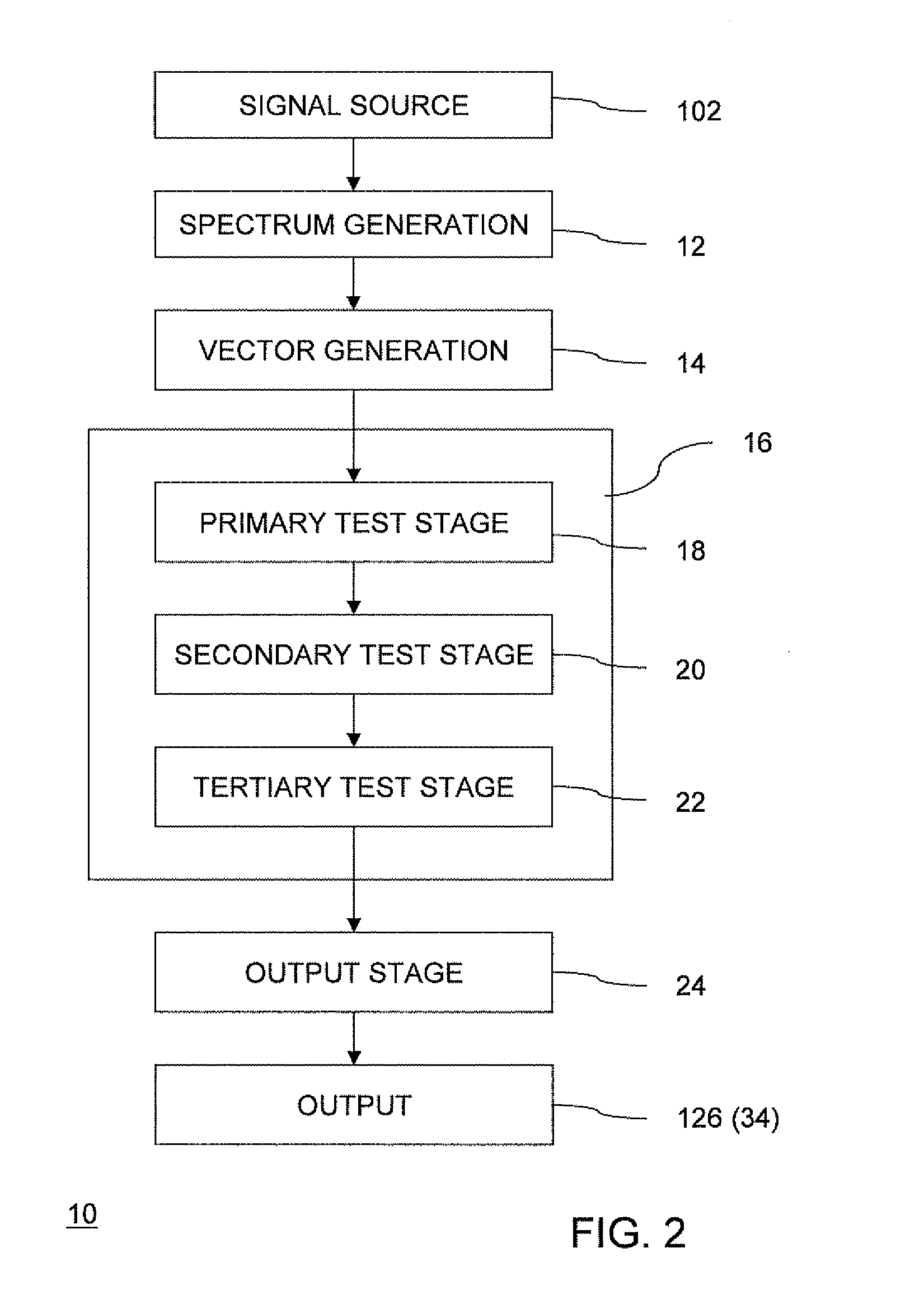System and Method for Media Recognition
a media recognition and system technology, applied in speech analysis, special data processing applications, instruments, etc., can solve the problems of unfavorable performance of standard algorithms, and achieve the effect of improving processing speed, faster recognition, and efficient operation
- Summary
- Abstract
- Description
- Claims
- Application Information
AI Technical Summary
Benefits of technology
Problems solved by technology
Method used
Image
Examples
Embodiment Construction
[0022]An example embodiment of the invention provides an audio recognition system that processes an incoming audio stream (a ‘programme’) and searches an internal database of music and sound effects ('tracks') to identify uses of those tracks within the programme. One example of an output of an example embodiment can be in the form of a cue sheet that lists the sections of tracks used and where they occur in the programme.
[0023]One example embodiment can work with a database of, for example, ten million seconds of music. However, other embodiments are scalable to work with a much larger database, for example a database of a billion seconds of music, and are capable of recognising clips with a duration of the order of, for example, three seconds or less, for example one second, and can operate at a rate of around ten times real time on a conventional server computer when processing audio from a typical music radio station.
[0024]The following are definitions of some of the terms used ...
PUM
 Login to View More
Login to View More Abstract
Description
Claims
Application Information
 Login to View More
Login to View More - R&D
- Intellectual Property
- Life Sciences
- Materials
- Tech Scout
- Unparalleled Data Quality
- Higher Quality Content
- 60% Fewer Hallucinations
Browse by: Latest US Patents, China's latest patents, Technical Efficacy Thesaurus, Application Domain, Technology Topic, Popular Technical Reports.
© 2025 PatSnap. All rights reserved.Legal|Privacy policy|Modern Slavery Act Transparency Statement|Sitemap|About US| Contact US: help@patsnap.com



